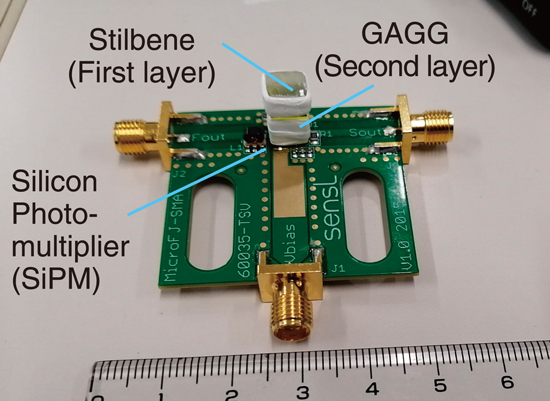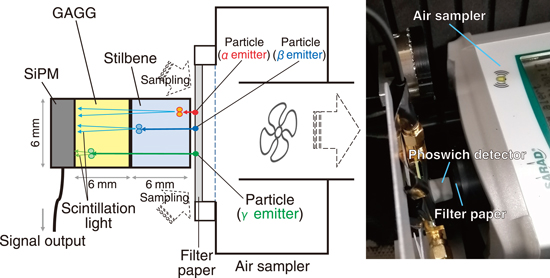
Fig.1-16 Developed phoswich alpha/beta/gamma detector

Fig.1-17 Portable continuous air-monitoring system

Fig.1-18 Discrimination results using PSD technology
During the decommissioning of nuclear facility sites, such as the TEPCO’s Fukushima Daiichi NPS, radioactive contamination occurs because of alpha, beta, and gamma nuclides. Conventionally, alpha nuclides can be measured using ZnS(Ag) scintillation counters. Beta nuclides can be measured using Geiger-Muller (GM) counters or plastic scintillators. Gamma nuclides can be measured using ionization chambers or NaI(Tl) scintillation detectors. Thus, three different detectors must be used for alpha, beta, and gamma rays, which is time-consuming.
In this work, a new phoswich alpha/beta/gamma detector was proposed and developed (Fig.1-16). A portable continuous air-monitoring system using the proposed phoswich detector was also developed for detecting unknown radioactive air contamination (Fig.1-17).
In the developed detector, the first layer is a stilbene scintillator (Size: 6 × 6 × 6 mm), and the second layer is the Gd3(Ga, Al)5O12(Ce) (GAGG) scintillator of the same size as the first layer. The bottom of the GAGG scintillator is optically coupled to a silicon photomultiplier (SiPM). The output signal from the SiPM is transferred to a waveform digitizer, and a pulse shape discrimination technique is applied. The alpha, beta, and gamma rays were correctly discriminated (Fig.1-18).
The alpha energy resolution of 5.5 MeV alpha particles was 22.1% ± 0.21% at the full width at half maximum (FWHM), whereas the gamma energy resolution of the 0.662 MeV gamma rays was 10.3% ± 0.18% FWHM. The energy spectra obtained from the simulations agree well with those obtained from measurements.
In addition, continuous alpha-nuclide air measurements were conducted in the basement of a concrete building where the 222Rn concentration was approximately 200 Bq/m3. The developed portable continuous air-monitoring system was used for this purpose. The measured peaks, which correspond to 212Bi (6.1 MeV), 214Po (7.7 MeV), and 212Po (8.8 MeV), were observed in the alpha spectrum by separating the beta and gamma rays.
The developed monitoring system is potentially efficient for the early detection of unknown released radioactive materials from nuclear facilities under decommissioning.
This work was supported in part by JSPS KAKENHI Grant-in-Aid for Early-Career Scientists (JP19K15482).
(Yuki Morishita)